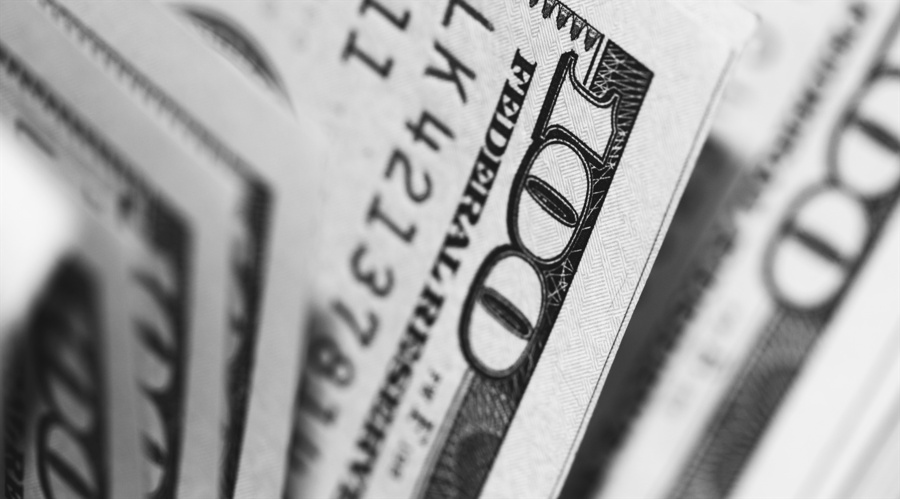
Understanding
the concept of dividend yield is critical in the world of investing for both
seasoned investors and newbies. Dividend yield is an important indicator for
determining the prospective return on investment from dividend-paying stocks.
A
thorough understanding of dividend yield is vital whether you’re looking for
income from your investments or assessing the attractiveness of dividend
stocks. We delve into the complexities of dividend yield in this expert guide,
unravelling its meaning, the dividend yield formula, examples, and emphasizing
its benefits and cons, arming you with the knowledge needed to make informed
investing decisions.
Dividend
yield is a financial statistic that compares the annual dividend income
received by an investor from a company to the stock’s current market price. In
simple terms, it represents the percentage return on dividends that an investor
might expect based on the current stock price. Dividend yield is an important
tool for income investors since it allows them to assess the income prospects
of equities which pay dividends.
Dividend Yield Examples
Consider
the following scenario:
Company A’s stock is trading at $100 per share and pays
a quarterly dividend of $4 per share. To calculate the dividend yield, do the
following:
Dividend
Yield = (Annual Dividend / Stock Price) = ($4 / $100) = 4%
Company
A in this case has a dividend yield of 4%.
How To Calculate Dividend Yield
The
formula for computing dividend yield is simple:
Dividend
Yield = 100 (Annual Dividend / Stock Price)
Where:
The total dividends paid during the year
are referred to as the annual dividend.
The stock price represents the stock’s
current market value.
What Affects Dividend Yield?
The
dividend yield of a firm is influenced by several factors, including:
- Dividend Amount: If the stock price remains constant, a bigger yearly dividend
will result in a higher dividend yield. - Stock Price: Even if the dividend amount remains constant, a decline in the
stock price results in a greater dividend yield. - Market mood: Positive news and investor mood can cause stock prices to climb,
thereby reducing dividend payouts.
Dividend Yield Advantages
- Income Generation: Dividend yield provides a consistent source of income for
investors, especially those seeking consistent cash flows from their
investments. - Comparison Tool: Dividend yield can be used by investors to evaluate the income
potential of different dividend-paying stocks, which can help them make
investing decisions. - Market Signal: A high dividend yield can imply that a stock’s price has
dropped, potentially giving value investors with a purchasing opportunity.
Dividend Yield Disadvantages
- Limited Growth: A high dividend yield may signal that the company is not
reinvesting income in possibilities for growth. - Misleading Indicator: A extremely high dividend yield may be a red flag,
implying that the company is struggling and may reduce payouts. - Interest Rate Impact: Changes in interest rates can have an impact on dividend
yields. Dividend yields may appear less appealing in comparison to bond yields
when interest rates climb.
Dividend payout ratio
Dividend
yield is strongly tied to dividend payout ratio. It denotes the proportion of a
company’s earnings that are distributed as dividends to shareholders. The
dividend payout ratio is calculated as follows:
Dividend
Payout Ratio = (Dividends Per Share / Earnings Per Share) multiplied by 100
Conclusion
Dividend
yield is an important tool for investors looking for regular income and
assessing dividend-paying stocks. You can better analyze the possible return on
investment from your holdings if you grasp the concept, methodology, and
instances of dividend yield.
However,
before making investing decisions, it is critical to evaluate dividend yield in
conjunction with other financial indicators and conduct thorough research. A
well-rounded analysis, like any other investment indicator, provides a clearer
picture of a stock’s potential and corresponds with your financial goals.
FAQs
Is a High Dividend Yield Good?
While
a high dividend yield can imply good income possibilities, other aspects such
as the company’s financial health and development prospects must also be
considered. Extremely high dividend yields may indicate underlying problems.
What is a good dividend yield?
A
healthy dividend yield fluctuates depending on market conditions and industry
regulations. Dividend rates that are much greater than the average can raise
concerns about sustainability.
How do you analyze dividends?
Consider the
company’s dividend history, its dividend per share, payout ratio,
financial health, and growth prospects when examining dividends. A thorough
evaluation provides a more realistic picture of the potential risks and
advantages as well as insight on the average dividends which you can expect, as well as
info on the stocks which pay and the ones that don’t.
How do you know if a dividend is safe?
A
safe dividend is often backed by a good payout ratio, constant profitability,
and predictable cash flows. Companies that have a history of retaining or
growing dividends are more likely to do so in the future.
What
is a trailing
dividend?
A trailing dividend refers to the
sum of dividend payments a company has made over a specific period, often the
past four quarters. It reflects a company’s historical dividend performance and
can help investors assess its stability and consistency. Trailing dividends
provide insights into a company’s financial health and its commitment to
sharing profits with shareholders. This information is crucial for
dividend-focused investors when evaluating potential investments.
Are there dividend
paying stocks in the S&P500?
Yes, many companies within the
S&P 500 index pay dividends to their shareholders. These dividend-paying
stocks distribute a portion of their profits to investors on a regular basis.
The S&P 500 includes a mix of companies from various sectors, some of which
prioritize dividends as a way to attract and reward investors. It’s important
to note that the presence of dividend-paying stocks in the S&P 500 can vary
over time due to changes in individual company performance and market trends.
Understanding
the concept of dividend yield is critical in the world of investing for both
seasoned investors and newbies. Dividend yield is an important indicator for
determining the prospective return on investment from dividend-paying stocks.
A
thorough understanding of dividend yield is vital whether you’re looking for
income from your investments or assessing the attractiveness of dividend
stocks. We delve into the complexities of dividend yield in this expert guide,
unravelling its meaning, the dividend yield formula, examples, and emphasizing
its benefits and cons, arming you with the knowledge needed to make informed
investing decisions.
Dividend
yield is a financial statistic that compares the annual dividend income
received by an investor from a company to the stock’s current market price. In
simple terms, it represents the percentage return on dividends that an investor
might expect based on the current stock price. Dividend yield is an important
tool for income investors since it allows them to assess the income prospects
of equities which pay dividends.
Dividend Yield Examples
Consider
the following scenario:
Company A’s stock is trading at $100 per share and pays
a quarterly dividend of $4 per share. To calculate the dividend yield, do the
following:
Dividend
Yield = (Annual Dividend / Stock Price) = ($4 / $100) = 4%
Company
A in this case has a dividend yield of 4%.
How To Calculate Dividend Yield
The
formula for computing dividend yield is simple:
Dividend
Yield = 100 (Annual Dividend / Stock Price)
Where:
The total dividends paid during the year
are referred to as the annual dividend.
The stock price represents the stock’s
current market value.
What Affects Dividend Yield?
The
dividend yield of a firm is influenced by several factors, including:
- Dividend Amount: If the stock price remains constant, a bigger yearly dividend
will result in a higher dividend yield. - Stock Price: Even if the dividend amount remains constant, a decline in the
stock price results in a greater dividend yield. - Market mood: Positive news and investor mood can cause stock prices to climb,
thereby reducing dividend payouts.
Dividend Yield Advantages
- Income Generation: Dividend yield provides a consistent source of income for
investors, especially those seeking consistent cash flows from their
investments. - Comparison Tool: Dividend yield can be used by investors to evaluate the income
potential of different dividend-paying stocks, which can help them make
investing decisions. - Market Signal: A high dividend yield can imply that a stock’s price has
dropped, potentially giving value investors with a purchasing opportunity.
Dividend Yield Disadvantages
- Limited Growth: A high dividend yield may signal that the company is not
reinvesting income in possibilities for growth. - Misleading Indicator: A extremely high dividend yield may be a red flag,
implying that the company is struggling and may reduce payouts. - Interest Rate Impact: Changes in interest rates can have an impact on dividend
yields. Dividend yields may appear less appealing in comparison to bond yields
when interest rates climb.
Dividend payout ratio
Dividend
yield is strongly tied to dividend payout ratio. It denotes the proportion of a
company’s earnings that are distributed as dividends to shareholders. The
dividend payout ratio is calculated as follows:
Dividend
Payout Ratio = (Dividends Per Share / Earnings Per Share) multiplied by 100
Conclusion
Dividend
yield is an important tool for investors looking for regular income and
assessing dividend-paying stocks. You can better analyze the possible return on
investment from your holdings if you grasp the concept, methodology, and
instances of dividend yield.
However,
before making investing decisions, it is critical to evaluate dividend yield in
conjunction with other financial indicators and conduct thorough research. A
well-rounded analysis, like any other investment indicator, provides a clearer
picture of a stock’s potential and corresponds with your financial goals.
FAQs
Is a High Dividend Yield Good?
While
a high dividend yield can imply good income possibilities, other aspects such
as the company’s financial health and development prospects must also be
considered. Extremely high dividend yields may indicate underlying problems.
What is a good dividend yield?
A
healthy dividend yield fluctuates depending on market conditions and industry
regulations. Dividend rates that are much greater than the average can raise
concerns about sustainability.
How do you analyze dividends?
Consider the
company’s dividend history, its dividend per share, payout ratio,
financial health, and growth prospects when examining dividends. A thorough
evaluation provides a more realistic picture of the potential risks and
advantages as well as insight on the average dividends which you can expect, as well as
info on the stocks which pay and the ones that don’t.
How do you know if a dividend is safe?
A
safe dividend is often backed by a good payout ratio, constant profitability,
and predictable cash flows. Companies that have a history of retaining or
growing dividends are more likely to do so in the future.
What
is a trailing
dividend?
A trailing dividend refers to the
sum of dividend payments a company has made over a specific period, often the
past four quarters. It reflects a company’s historical dividend performance and
can help investors assess its stability and consistency. Trailing dividends
provide insights into a company’s financial health and its commitment to
sharing profits with shareholders. This information is crucial for
dividend-focused investors when evaluating potential investments.
Are there dividend
paying stocks in the S&P500?
Yes, many companies within the
S&P 500 index pay dividends to their shareholders. These dividend-paying
stocks distribute a portion of their profits to investors on a regular basis.
The S&P 500 includes a mix of companies from various sectors, some of which
prioritize dividends as a way to attract and reward investors. It’s important
to note that the presence of dividend-paying stocks in the S&P 500 can vary
over time due to changes in individual company performance and market trends.
- SEO Powered Content & PR Distribution. Get Amplified Today.
- PlatoData.Network Vertical Generative Ai. Empower Yourself. Access Here.
- PlatoAiStream. Web3 Intelligence. Knowledge Amplified. Access Here.
- PlatoESG. Automotive / EVs, Carbon, CleanTech, Energy, Environment, Solar, Waste Management. Access Here.
- PlatoHealth. Biotech and Clinical Trials Intelligence. Access Here.
- ChartPrime. Elevate your Trading Game with ChartPrime. Access Here.
- BlockOffsets. Modernizing Environmental Offset Ownership. Access Here.
- Source: https://www.financemagnates.com//trending/exploring-dividend-yields-meaning-formula-and-examples/
- :has
- :is
- :not
- ][p
- 100
- 107
- 500
- a
- About
- advantages
- allows
- also
- amount
- an
- analysis
- analyze
- and
- annual
- any
- appealing
- appear
- ARE
- AS
- aspects
- assess
- Assessing
- At
- attract
- average
- backed
- banner
- based
- basis
- BE
- before
- benefits
- Better
- bigger
- bond
- Bond yields
- both
- by
- calculate
- calculated
- CAN
- case
- Cash
- Cause
- Changes
- clearer
- climb
- commitment
- Companies
- company
- comparison
- complexities
- computing
- concept
- Concerns
- conditions
- Conduct
- conjunction
- Cons
- considered
- consistent
- constant
- corresponds
- critical
- crucial
- Current
- decisions
- Decline
- delve
- denotes
- Depending
- determining
- Development
- different
- distribute
- distributed
- dividend
- dividends
- do
- Dont
- dropped
- due
- during
- Earnings
- emphasizing
- Equities
- especially
- evaluate
- evaluating
- evaluation
- Even
- Examining
- examples
- expect
- expert
- Exploring
- extremely
- factors
- financial
- financial goals
- financial health
- Firm
- Flows
- fluctuates
- following
- follows
- For
- For Investors
- formula
- four
- from
- future
- generation
- Giving
- Goals
- good
- grasp
- greater
- Growing
- Growth
- guide
- Have
- Health
- healthy
- help
- High
- higher
- historical
- history
- Holdings
- HTTPS
- if
- Impact
- important
- in
- includes
- Including
- Income
- index
- indicate
- Indicator
- Indicators
- individual
- industry
- influenced
- info
- information
- informed
- insight
- insights
- interest
- Interest Rates
- into
- investing
- investment
- Investments
- investor
- Investors
- IT
- ITS
- jpg
- Know
- knowledge
- less
- like
- likely
- looking
- made
- make
- Making
- many
- Market
- market conditions
- Market Trends
- market value
- May..
- meaning
- Methodology
- might
- mix
- mood
- more
- much
- multiplied
- must
- needed
- news
- note
- of
- often
- on
- ones
- Opportunity
- or
- Other
- over
- paid
- past
- Pay
- paying
- payments
- payouts
- pays
- per
- percentage
- performance
- period
- picture
- plato
- Plato Data Intelligence
- PlatoData
- positive
- possibilities
- possible
- potential
- potentially
- Predictable
- presence
- price
- Prices
- Prioritize
- problems
- profitability
- profits
- proportion
- prospective
- prospects
- provide
- provides
- purchasing
- raise
- Rate
- Rates
- ratio
- RE
- realistic
- received
- Red
- reduce
- reducing
- referred
- refers
- reflects
- regular
- regulations
- remains
- represents
- research
- result
- Results
- retaining
- return
- Reward
- risks
- s
- S&P
- S&P 500
- S&P500
- safe
- scenario
- seasoned
- Sectors
- seeking
- several
- Share
- Shareholders
- sharing
- Signal
- Simple
- since
- So
- some
- Source
- specific
- Stability
- stock
- Stocks
- strongly
- Struggling
- such
- Sustainability
- terms
- than
- that
- The
- The Future
- the world
- their
- Them
- There.
- thereby
- These
- this
- those
- Tied
- time
- to
- tool
- Total
- Trading
- Trends
- underlying
- understanding
- used
- value
- various
- vital
- Way..
- we
- WELL
- when
- whether
- which
- will
- with
- within
- world
- year
- yearly
- Yield
- yields
- you
- Your
- zephyrnet






